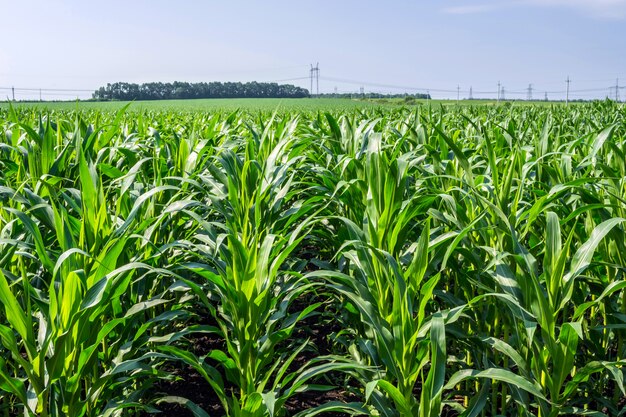10 Best Agricultural Practices for Maximizing Yield in Nigeria

Agriculture is a vital sector in Nigeria, contributing significantly to the nation’s economy and providing livelihoods for millions. To enhance productivity and ensure food security, Nigerian farmers can adopt several best agricultural practices. Here are ten effective strategies for maximizing yield in Nigeria.
1. Crop Rotation
Crop rotation involves alternating different crops in the same field over successive seasons. This practice helps improve soil fertility, reduce pest and disease cycles, and enhance overall soil health. By rotating crops such as maize, legumes, and tubers, farmers can optimize their yields while minimizing the risk of soil degradation.
2. Soil Testing and Fertility Management
Regular soil testing is essential for understanding nutrient levels and deficiencies in the soil. Based on the results, farmers can apply appropriate fertilizers and organic amendments to improve soil fertility. Implementing integrated nutrient management practices helps maintain a balanced nutrient supply, leading to healthier crops and higher yields.
3. Use of Improved Seed Varieties
Selecting high-yielding and disease-resistant seed varieties is crucial for maximizing crop production. Farmers should consider local climatic conditions and choose seeds that are well-suited to their environment. Improved seed varieties often have better germination rates and resilience to pests and diseases, resulting in increased yields.
4. Efficient Irrigation Systems
With varying rainfall patterns, effective irrigation practices are essential for ensuring consistent water supply to crops. Farmers should adopt irrigation methods such as drip or sprinkler systems that minimize water wastage while providing adequate moisture to plants. Efficient water management leads to healthier crops and improved yields, especially in arid regions.
5. Integrated Pest Management (IPM)
IPM involves combining biological, cultural, physical, and chemical methods to control pests and diseases sustainably. Farmers should monitor pest populations and apply targeted interventions only when necessary. By using natural predators, crop rotation, and resistant varieties, farmers can minimize chemical pesticide use and protect their crops from damage.
6. Mulching
Mulching involves covering the soil with organic or inorganic materials to retain moisture, suppress weeds, and improve soil health. Applying mulch can help regulate soil temperature and reduce evaporation, which is especially beneficial during dry seasons. This practice contributes to healthier crops and increased yields.
7. Precision Agriculture
Precision agriculture utilizes technology, such as GPS and remote sensing, to optimize field-level management. By collecting and analyzing data on soil conditions, weather patterns, and crop health, farmers can make informed decisions regarding planting, fertilization, and irrigation. This targeted approach can lead to improved resource use and higher yields.
8. Agroforestry
Integrating trees and shrubs with crops and livestock can enhance biodiversity, improve soil fertility, and provide additional income sources. Agroforestry systems can help mitigate the effects of climate change, reduce erosion, and create more sustainable farming environments. This practice fosters resilience and can lead to increased overall yields.
9. Training and Capacity Building
Investing in farmer education and training is crucial for implementing modern agricultural practices. Agricultural extension services, workshops, and training programs can equip farmers with the knowledge and skills needed to adopt innovative techniques. Continuous learning can significantly enhance productivity and yield.
10. Sustainable Land Management
Adopting sustainable land management practices is essential for preserving soil health and productivity. Farmers should implement practices such as contour farming, terracing, and cover cropping to prevent soil erosion and degradation. Sustainable land management not only improves yields but also protects the environment for future generations.
Maximizing agricultural yield in Nigeria requires a multifaceted approach that combines traditional practices with modern techniques. By adopting these best practices, farmers can enhance productivity, improve soil health, and ensure food security. As agriculture remains a cornerstone of the Nigerian economy, investing in these strategies is vital for sustainable growth and development in the sector.




